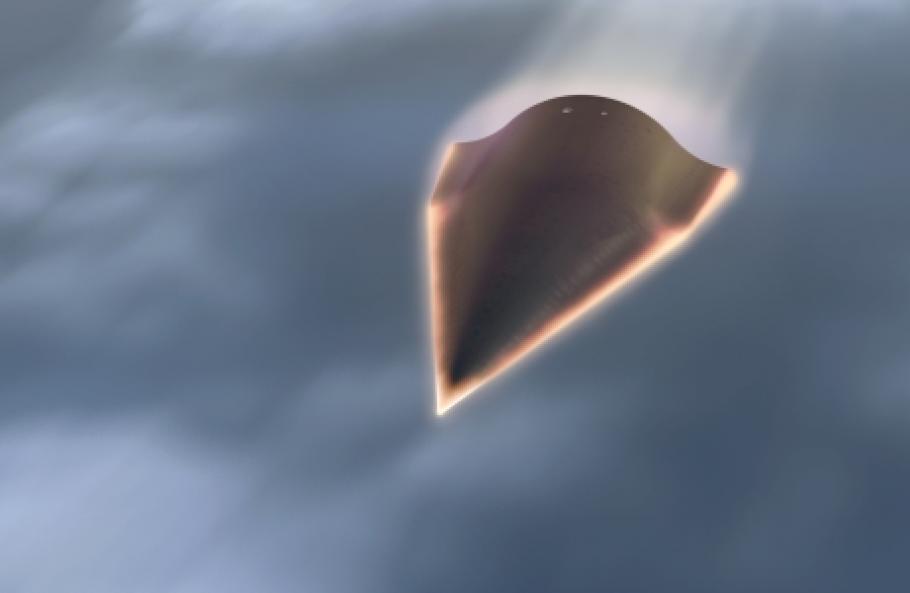The day is Thursday, February 24, 1949; the pens on the automatic plotting boards at South Station are busy tracking the altitude and course of a rocket, which just moments before had been launched from a site three miles away on the test range of the White Sands Proving Ground. The rocket is a V-2, one of many brought to the United States from Germany after World War II. By this time launching V-2s had become almost routine for the crews at White Sands, but on this day neither the launch nor the rocket are “routine.” Mounted on top of this V-2 is a slender, needle-like rocket called the WAC Corporal, which serves as a second stage to the V-2. This test firing of the combination V-2/WAC Corporal is the first meaningful attempt to demonstrate the use of a multi-stage rocket for achieving high velocities and high altitudes and is part of a larger program labeled “Bumper” by the U.S. Army. All previous rocket launchings of any importance, both in the United States and in Europe, had utilized the single stage V-2 by itself. On this clear February day, the pen plotters track the V-2 to an altitude of 100 miles at a velocity of 3500 mph, at which point the WAC Corporal is ignited. The slender upper stage accelerates to a maximum velocity of 5150 mph and reaches an altitude of 244 miles, exceeding by a healthy 130 miles the previous record set by a V-2 alone. After reaching this peak, the WAC Corporal noses over and careers back into the atmosphere at over 5000 mph. In so doing, it becomes the first object of human origin to achieve hypersonic flight – the first time that any vehicle has flown faster than five times the speed of sound.* Since that time, numerous vehicles have flown at hypersonic speeds – the nose cones of intercontinental ballistic missiles, and with humans aboard the Mercury, Gemini, and Apollo space capsules, the space shuttle, and the X-15 hypersonic research vehicle. All of these vehicles share the same feature – after initial boost to altitude, they essentially glide back through the atmosphere with only gravity for a propelling force (they fall back to the earth’s surface). The Mach number ranges from Mach 7 for the X-15 to Mach 36 for the Apollo capsule. Indeed, the hypersonic flight regime is defined as flight at Mach 5 or higher. This is, however, just a rule of thumb. As a vehicle accelerates from Mach 4.99 to 5.01, the flow does not change from green to red, and there is no clap of thunder, unlike what happens when a vehicle accelerates from Mach 0.99 to 1.01 entering the supersonic flight regime. Here, the physics of the flow does change dramatically when going from subsonic to supersonic flight, and there is a clap of thunder (the sonic boom). Rather, a better definition of hypersonic flight is that high-speed part of the flight spectrum where certain physical phenomena become more important that are not so important at lower speeds. One of those physical phenomena is intense aerodynamic heating of the surface due to skin friction and shock wave heating. Protection against aerodynamic heating is the dominant feature that drives the design of hypersonic vehicles.
The Falcon Hypersonic Technology Vehicle 2 (HTV-2)
A recent example of the effect of aerodynamic heating on a hypersonic vehicle is the test of the Hypersonic Technology Vehicle 2 (HTV-2), very recently announced by the Defense Advanced Research Projects Agency (DARPA). In August 2011, this unmanned vehicle was powered by rockets to Mach 20, after which it spent about 200 seconds flying within the atmosphere before the intense aerodynamic heating resulted in the skin peeling away from the internal structure. The flight was finally aborted and was sent plunging into the Pacific Ocean.
Today there is a great deal of interest in sustained flight within the atmosphere at hypersonic speeds. The only propulsion system that would be practical for this application is a specialized ramjet engine that would have supersonic flow completely throughout the engine – a supersonic combustion ramjet (Scramjet). This is, however, a massive technical challenge, and after years of research and technical development two test vehicles have recently flown with operating scramjets, the X-43, which achieved about 10 seconds of sustained thrust in flight at Mach 9.6, and the X-51, which operated for about 200 seconds at Mach 5. These are but baby steps in the direction of what might be the first missions for such an air breathing hypersonic vehicle for the military. Moreover, there has been a long standing dream of a hypersonic transport – the dream of flying from London to Tokyo in 90 minutes. A recent article in Aerospace America published by the American Institute of Aeronautics and Astronautics** examined again the status of this dream and ended with the following: “The question is, after over a half a century of development are we any closer to that childhood dream of the hypersonic passenger aircraft, or is it still 30 years away?” Nobody knows the answer to this question, but in historical perspective the advancement of the airplane since the Wright brothers has been driven by the desire to fly faster and higher. Although today there are many other considerations that drive the technology of the airplane, there will always be that ultimate dream of faster and higher, and that means hypersonic flight. References *Anderson, John D. Jr., Hypersonic and High Temperature Gasdynamics, 2nd edition, American Institute of Aeronautics and Astronautics, Reston, Virginia, 2006. **Williamson, Mark, “Hypersonic Transport … 30 Years and Holding?”, Aerospace America, Vol. 50, No. 5, May 2012, pp 40-45.


